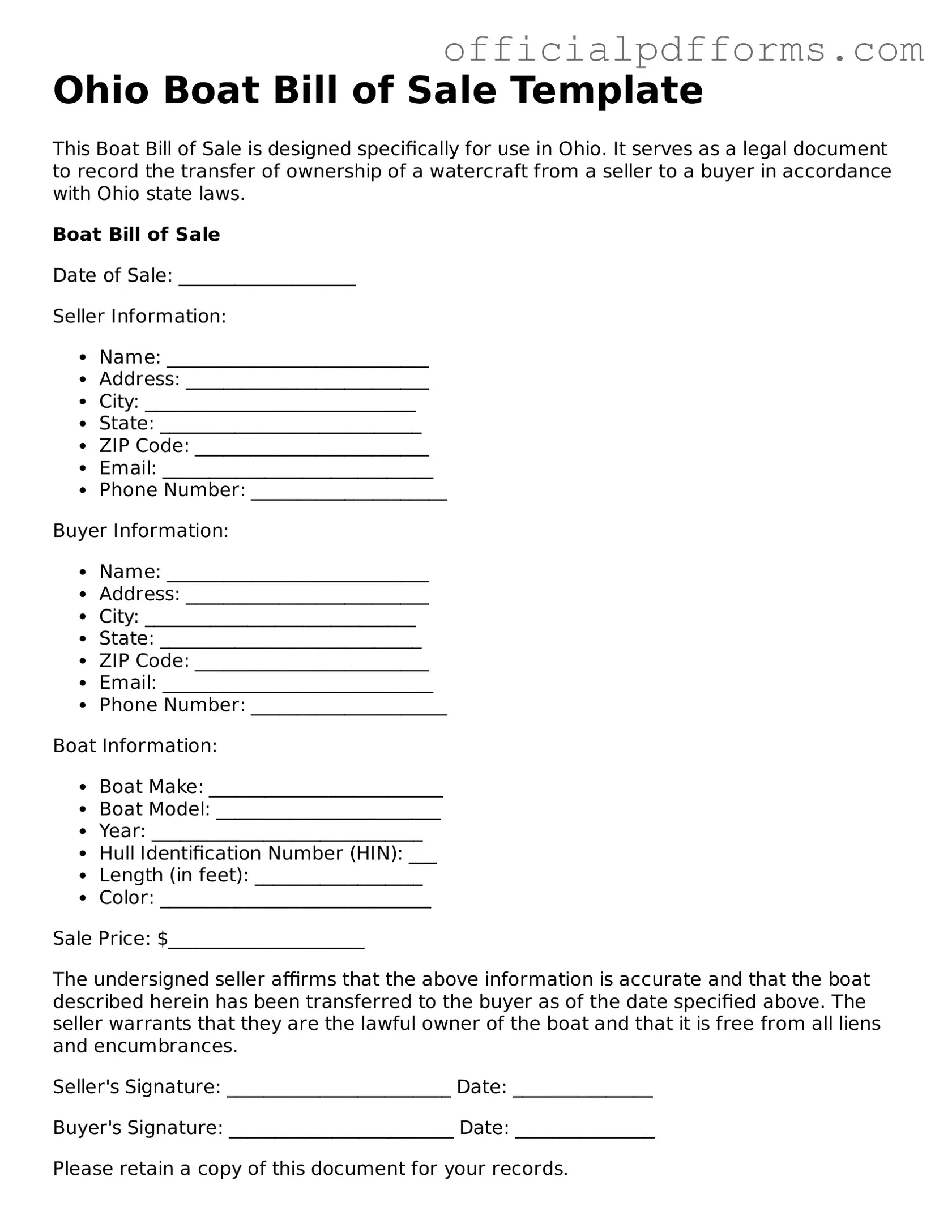Printable Ohio Boat Bill of Sale Template
The Ohio Boat Bill of Sale form is a legal document used to record the sale and transfer of ownership of a boat in Ohio. This form provides essential details about the transaction, including information about the buyer, seller, and the boat itself. Completing this form is crucial for ensuring a smooth transfer of ownership and maintaining accurate records.
To fill out the Ohio Boat Bill of Sale form, click the button below.
Access Form Online
